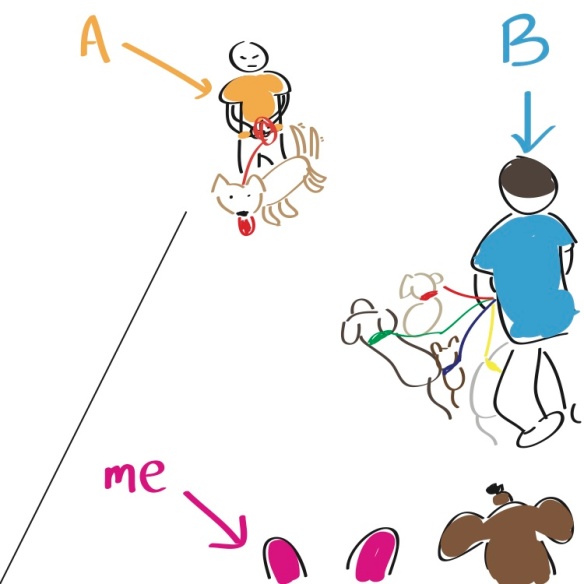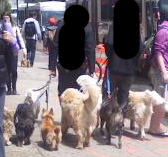I was walking one of my clients’ dogs today and came across a sticky situation. My dog has had aggression issues towards other dogs (and sometimes people) so her owner and past trainer have done extensive work to desensitize and counter-condition her towards other dogs. So here I am, walking her down a busy NYC street when I come across the following scenario:

(yes, I have pink sneakers).
I first see Person B walking ahead of us – a man walking at least four dogs at one time. He is struggling to keep them under control while picking up one dog’s poop.
Then I see Person A coming towards us from the other end of the sidewalk. He is holding onto a boxer-mix type dog.
B sees A. B starts panicking and pulls his dogs toward the buildings to his right. A starts wrapping his dog’s leash multiple times around his wrist. Dogs of both A and B are pulling and lunging towards each other.
Then there’s me and my dog. My dog looks at me. I click and treat. While the other dogs are struggling to pull away from their human, mine is happy as a clam and staring straight at me.
ah the rewards of being a positive reinforcement trainer. ( :




